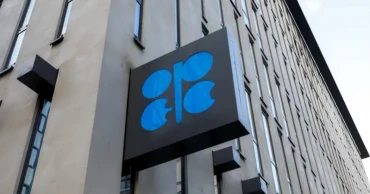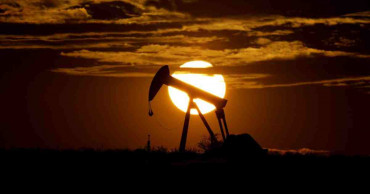OPEC+
With oil prices slumping, OPEC+ producers weigh more production cuts
The major oil-producing countries led by Saudi Arabia and Russia are wrestling with whether to make another cut in supply to the global economy as the OPEC+ alliance struggles to prop up sagging oil prices that have been a boon to U.S. drivers and helped ease inflation worldwide.
The 23-member group is meeting Sunday at OPEC headquarters in Vienna after sending mixed signals about possible moves. Saudi Arabia, dominant among the oil cartel's members, has warned speculators that they might get burned by betting on lower prices. Russia, the leader of the non-OPEC allies, has indicated no change to output is expected.
The decision comes amid uncertainty about when the slow-growing global economy will regain its thirst for fuel for travel and industry, and with producers counting on oil profits to bolster their coffers.
Oil prices have fallen even after OPEC+ slashed 2 million barrels per day in October, angering U.S. President Joe Biden by threatening higher gasoline prices a month before the midterm elections. Then, several OPEC members led by the Saudis made a surprise cut of 1.16 million barrels a day in April.
International benchmark Brent crude climbed as high as $87 per barrel but has given up its post-cut gains and been loitering below $75 per barrel in recent days. U.S. crude has dipped below $70.
Those lower prices have helped U.S. drivers as the summer travel season kicks off, with prices at the pump averaging $3.55, down $1.02 from a year ago, according to auto club AAA. Falling energy prices also helped inflation in the 20 European countries that use the euro drop to the lowest level since before Russia invaded Ukraine.
The U.S. recently replenished its Strategic Petroleum Reserve — after Biden announced the largest release from the national reserve in American history last year — in an indicator that U.S. officials may be less worried about OPEC cuts than in months past.
The Saudis, on the other hand, need sustained high oil revenue to fund ambitious development projects aimed at diversifying the country's economy. The International Monetary Fund estimates the kingdom needs $80.90 per barrel to meet its envisioned spending commitments, which include a planned $500 billion futuristic desert city project called Neom.
That may have been one motivation behind Energy Minister Abdulaziz bin Salman's warning to speculators that they will be "ouching" if they keep betting on lower oil prices.
Bin Salman's pointed comment isn't necessarily a prelude to a cut at Sunday's meeting, said James Swanston, Middle East and North Africa economist at Capital Economics.
"Our expectation is that OPEC+ will stick with current output quotas," he said, adding that "there have been signs that the government may be readying to live with lower oil prices and running budget deficits."
On top of that, Russia may find current prices to its liking because its oil is finding eager new customers in India, China and Turkey. Western sanctions over the war in Ukraine have forced Russian oil to sell at discounts of around $53 to $57 per barrel.
At those prices, Moscow's shipments avoid triggering the $60 price cap imposed by the Group of Seven major democracies to try to limit oil profits flowing into Russia's war chest. The price ceiling allows the world's No. 3 oil producer to keep supplying non-Western customers to avoid a global shortage that would drive up prices for everyone.
Insurers and shipping companies largely based in Western countries are barred from handling Russian oil if it is priced above the cap. Russia has found ways to evade the limits through "dark fleet" tankers, which tamper with transponders showing their locations or transfer oil from ship to ship to disguise its origin.
An OPEC+ "production cut could push the price of Russian oil above the G7 price cap of $60 per barrel, which would make it difficult to transport and thus to sell the oil," commodity analyst Carsten Fritsch at Commerzbank wrote in a research note. "Russia appears to be doing good business at the current price level."
The International Energy Agency said in its April oil market report that Russia has not completely followed through on its announcement to extend a voluntary cut of 500,000 barrels per day through the end of the year.
In fact, Russia's total exports of oil and refined products such as diesel fuel rose in April to a post-invasion high of 8.3 million barrels per day. That is in spite of a near-total boycott from the European Union, formerly Russia's biggest customer.
Analysts say OPEC+ faces conflicting pressures. A cut could support prices or send them higher, with demand expected to pick up later this year.
"The impact of higher oil prices on the global economy will weigh heavily on the ministers' minds," said Jorge Leon, senior vice president of oil market research at Rystad Energy. "High oil prices would fuel inflation in the West right when central banks are starting to see inflation gradually recede."
"This could prompt central banks to continue increasing interest rates, a detrimental move for the global economy and oil demand," Leon wrote in a research note.
2 years ago
OPEC+ makes small cut to global oil supplies as prices dip
OPEC and allied oil-producing countries, including Russia, made a small trim in their supplies to the global economy Monday, underlining their unhappiness as recession fears help drive down crude prices — along with the cost of gasoline, to drivers’ delight.
The decision for October rolls back a mostly symbolic increase of 100,000 barrels per day in September. It follows a statement last month from Saudi Arabia’s energy minister that the OPEC+ coalition could reduce output at any time.
Oil producers such as Saudi Arabia have resisted calls from U.S. President Joe Biden to pump more oil to lower gasoline prices and the burden on consumers. OPEC+ has stuck with only cautious increases to make up for deep cuts made during the COVID-19 pandemic, which were finally restored in August.
Since then, growing worries about slumping future demand have helped send oil prices down from June peaks of over $120 per barrel, cutting into the windfall for OPEC+ countries’ coffers but proving a blessing for drivers in the U.S. as pump prices have eased.
Read: Foreign exchange rate stable after Bangladesh Bank tightens spending
The supply cut for October is only a small fraction of the 43.8 million barrels per day under OPEC+ production goals, but wrong-footed several market analysts’ predictions of no change in output.
The amount of oil per day “may seem negligible, but the message from today’s cut is clear: OPEC+ thinks they’ve fallen enough,” Columbia University energy policy expert Jason Bordoff tweeted.
Oil prices jumped after the announcement. U.S. crude rose 3.3%, to $89.79 per barrel, while international benchmark Brent was up 3.7%, to $96.50, after the decision.
Oil prices have gyrated in recent months: Recession fears have pushed them down, while worries of a loss of Russian oil because of sanctions over its invasion of Ukraine pushed them up.
Recently, recession fears have taken the upper hand. Economists in Europe are penciling in a recession at the end of this year due to skyrocketing inflation fed by energy costs, while China’s severe restrictions aimed at halting the spread of the coronavirus have sapped growth in that major world economy.
Those falling oil prices have been a boon to U.S. drivers, sending gasoline prices down to $3.82 per gallon from record highs of over $5 in June and offering a potential boost to Biden as his Democratic Party heads into midterm elections.
In June, fears that U.S. and European sanctions would take Russian oil off the market helped push Brent to over $123. Prices have fallen sharply in recent weeks as it became clear that Russia is still managing to sell significant amounts of oil in Asia, albeit at sharply discounted prices.
Read: Liz Truss: UK's incoming PM who models herself on Iron Lady Thatcher
But concerns about the loss of Russian supply are still out there because European sanctions aimed at blocking most Russian oil imports won’t take effect until the end of the year.
Other factors are lurking that could influence the price of oil. For one, the Group of Seven wealthy democracies plan to impose a price cap on Russian oil aimed at battling high energy prices and reducing oil profits that Russia can use for its war in Ukraine.
That’s if the cap works as intended. Russia could refuse to supply oil to countries and companies observing the cap, which would take barrels off the market. The price cap has not been set, and its influence on the global price remains unclear.
Meanwhile, a deal between Western countries and Iran to limit Tehran’s nuclear program could ease sanctions and see more than 1 million barrels per day of Iranian oil return to the market in coming months. However, tensions between the U.S. and Iran appear to have risen in recent days: Iran seized two U.S. naval drones in the Red Sea, and U.S., Kuwaiti and Saudi warplanes flew over the Middle East on Sunday in a show of force.
OPEC+ countries’ energy ministers said Monday that their September increase of 100,000 barrels a day was only for that month and that the group could meet again at any time to address market developments. The group said its chairman could call an extraordinary meeting at any time ahead of the next scheduled meeting Oct. 5.
3 years ago



